
In the lumens arms race, other important features of a headtorch can get overlooked. But the Distance LT1100 fares well on all counts, offering a great balance of output vs burn time, and lightness vs robustness. For all-round hill and mountain use it would be a bright choice, says Rob Greenwood.
Last year we reviewed the Black Diamond Distance 1500 as a part of our Performance Headtorch Group Test. The Distance LT1100 is similar in many respects, but with one major variation - it doesn't feature a battery pack on the back. As a result of this it actually has a very different feel. It's significantly lighter too (108g vs. 213g), but only fractionally less bright (1100 vs. 1500 lumens), and still features a respectable burn time into the bargain. This combination of lightness and power makes it a pretty attractive proposition on paper. We would question why it's been marketed with running in mind, because to us its attributes make it seem a much stronger option for climbers, mountaineers and hillwalkers.
In Use
Whilst the Distance LT1100 is indeed lighter than the Distance 1500 it's still got Black Diamond's trademark indestructibility about it. This is definitely a torch that's designed to take the knocks. It's IPX67 rated too, meaning that it's fully submersible - a useful feature in the semi-aquatic UK environment. Whilst it's primarily marketed towards runners, its warm beam* and broad flood means that it is - in our opinion - much better suited towards other climbing and hill-related uses. When moving quickly it's harder to pick out details with warm light and the flood, whilst giving a good spread, is perhaps a little too spread and could do with more of a spot - at least from a runner's perspective.
* for running, a cool white light does - for some reason - pick out features better on the ground
One niggle from a climber and mountaineer's perspective is that the buttons are quite small and therefore hard to operate with cold or gloved hands. It's not impossible, but it is a challenge, and due to the way Black Diamond don't use preset levels of lighting - instead preferring a scrolling approach - you do have to press them for longer, which can be awkward. On the plus side you get a more bespoke level of lighting with this scrolling feature, but on the downside it takes longer for you to get it, and it's hard to be sure what level you've set the torch to (and hence how long the battery might be expected to last).
Something I really rate is Black Diamond's trademark 'PowerTap' feature, which by simply touching the lamp housing gives you a 10 second boost up to the maximum number of lumens available; and wow - when full of juice it is BRIGHT both in terms of its spot and flood. It's very good for battery life, because nothing burns through energy quite like having a torch run on maximum output. There's no reason you can't tap again for another 10 seconds if you need it, but the fact it resets each time means that you go back to a more sustainable output in between, as opposed to forgetting about it and burning through battery power in the process. The main con is simply that if you do want that greater level of brightness for longer you can't just click a button and have it - you've got to keep tapping.
Beam and Brightness / Battery and Burn-Time
Black Diamond offer the following for brightness and burn time:
The 600 lumens of high setting give you a quoted range of up to 125m - perhaps an over-estimate, but in our experience easily enough for most walking or climbing uses. We'd always take promised brightness with a pinch of salt since output will inevitably fall from its initial headline peak, while burn times may be affected by conditions such as cold; but it has to be said that the on-paper 4.25hrs is very respectable, and for mountain use where you may be out at night for hours - whether intentionally or by mistake - this is a major plus point for the Distance LT1100. In real world use, we've been impressed by its staying power.
Comfort and Wearability
The elasticated headband is wide, stretchy, comfortable and easy to adjust. It's pleasantly simple and doesn't try to over-complicate things. If there were to be a hitch in terms of comfort it would likely come as a result of the width of the torch unit itself, as it's quite broad, and those with smaller heads might find that it feels a little too large across the forehead.
One clever feature not seen on many front-mounted headtorches is that the light pivots while the battery - the heavy bit - stays mounted against your head. It's a subtle feature, but nice to have for the improved sense of balance and reduced wobble.
Additional Features
Much like the Distance 1500, the Distance LT1100 can be locked off by clicking both buttons together for a few seconds. Many a headtorch battery has died whilst being left on within someone's pack, when the buttons have been accidentally knocked. In fact we'd say for mountain use - when you're carrying the torch all day in your pack to be brought out only if you're still up there at dusk - a locking feature is basically essential.
There are also red, blue and green lighting modes, which may or may not be something you actually want.
Charging
The rechargeable 2200 mAh Li-ion battery charges via USB-C, and the cell is available separately so you could in theory carry a spare to swap over once the original is running low; perhaps this would be an option worth considering for backpacking or wilderness travel.
Summary
I've got on with the Distance LT1100 better than I did its bigger brother, the Distance 1500. I think its significantly lighter weight, combined with an only slight reduction of output, has made it a much more attractive proposition; however, sharing that same indestructible DNA makes it all the more appealing, because it feels like it's going to last a long, long time - especially when compared to other, super-light models out there. I'm slightly sceptical of its application to running, but as far as climbing, mountaineering and hillwalking are concerned it's much more suitable. In fact, its balance of brightness vs burn time, and lightness vs robustness makes it a very attractive proposition for all-round hill and mountain use.


















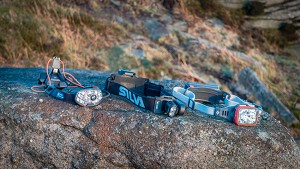

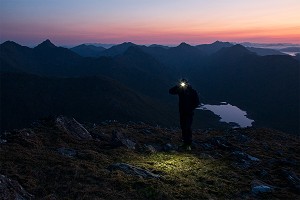
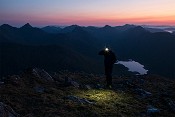


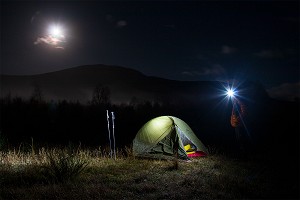
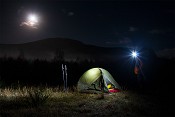
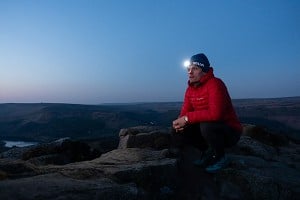
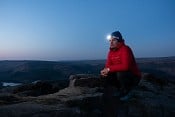
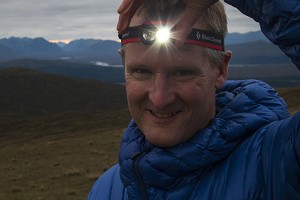

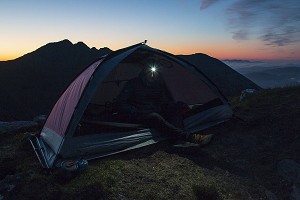
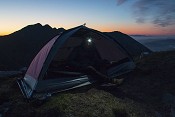
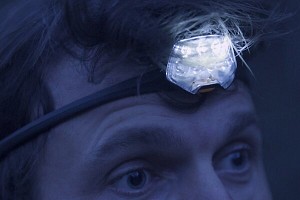
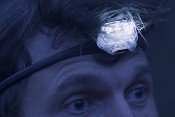
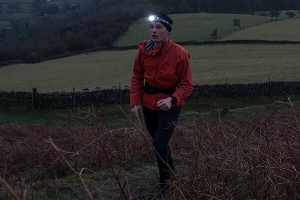
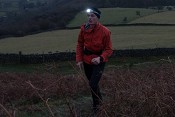
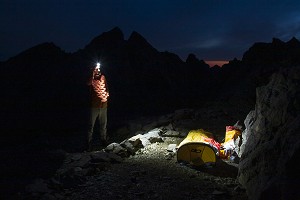
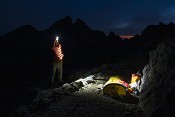


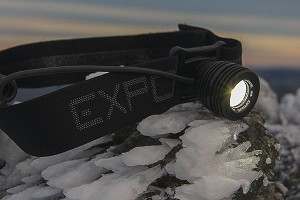
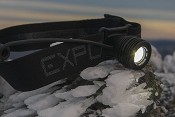


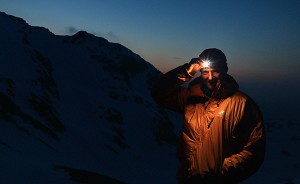



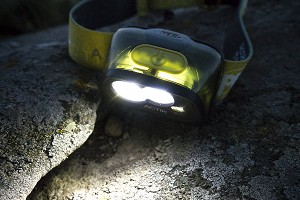

Comments
There's definitely a lot more to light than lumens. In a way, it's better to talk about the quality of the light and its balance between spot and flood. From a climber's perspective I think a flood is better, because it gives you a much greater spread, which is ultimately what you want whilst climbing - so you can see as much as possible. As for the warmth, I suspect a lot of it boils down to personal preference, but I think I prefer it for rock climbing - then prefer white light for running.
Personally, I never use any of these modes - and presumed no one else did too; however, I remember saying this previously and being blown away by the number of people who said they did - hence have been less scathing about it ever since.
It should be in there - it's included within the Performance Headtorch Group Group Test Link.
Green and blue are mostly used by hunters. Of little use for anybody else.
Unlike the author, I find warm white definitely better for making out features on the ground, whether running or climbing. Especially in a drizzle or fog, as any bluer light gets refracted more (hint: a car's fog lights are yellow for a reason). YMMV, of course.
Still, I'd prefer a test of a Fenix head torch or a similar, as the specialist brands are usually much better than the generic gear manufacturers' ones like BD. Alas, Fenix doesn't seem to be keen on sending free review samples to the UKC, so that won't happen anytime soon.
Any thoughts on a comparison to the Swift RL? That too has a "headline" output of 1100 Lumen and seems to be pitched at the same users?
I don't know if it's just me with my Daltonic super powers (colour blind, particularly red on green),but red light makes OS map contours vanish completely. Sometimes it's light enough to use night vision for getting round, but extra light is needed for map reading.
Maybe blue or green light's might help in that situation?